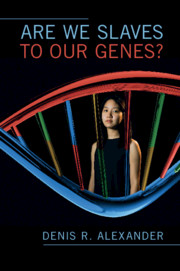16 results
11 - Sex in Geneva in the Sixteenth Century
-
-
- Book:
- The Cambridge World History of Sexualities
- Published online:
- 26 April 2024
- Print publication:
- 16 May 2024, pp 210-231
-
- Chapter
- Export citation
22 - Sex in Sydney in the Twentieth Century
-
-
- Book:
- The Cambridge World History of Sexualities
- Published online:
- 26 April 2024
- Print publication:
- 16 May 2024, pp 465-486
-
- Chapter
- Export citation
12 - Sexuality in Jewish Traditions
-
-
- Book:
- The Cambridge World History of Sexualities
- Published online:
- 26 April 2024
- Print publication:
- 16 May 2024, pp 250-270
-
- Chapter
- Export citation
2 - The Evolution of Female Same-Sex Attraction
- from Part I - Controversies and Unresolved Issues
-
-
- Book:
- The Cambridge Handbook of Evolutionary Perspectives on Sexual Psychology
- Published online:
- 30 June 2022
- Print publication:
- 21 July 2022, pp 28-51
-
- Chapter
- Export citation
Chapter 3 - Sappho and Sexuality
- from Part I - Contexts
-
-
- Book:
- The Cambridge Companion to Sappho
- Published online:
- 09 April 2021
- Print publication:
- 29 April 2021, pp 36-52
-
- Chapter
- Export citation
Chapter 28 - Sappho in the Twentieth Century and Beyond
- from Part IV - Receptions
-
-
- Book:
- The Cambridge Companion to Sappho
- Published online:
- 09 April 2021
- Print publication:
- 29 April 2021, pp 390-407
-
- Chapter
- Export citation
2 - Supi, Secrecy, and the Gift of Knowing
-
- Book:
- Knowing Women
- Published online:
- 07 January 2021
- Print publication:
- 21 January 2021, pp 79-122
-
- Chapter
-
- You have access
- Open access
- HTML
- Export citation

Are We Slaves to our Genes?
-
- Published online:
- 11 September 2020
- Print publication:
- 01 October 2020
8 - Off Duty
-
- Book:
- Sisters in Arms
- Published online:
- 31 August 2020
- Print publication:
- 03 September 2020, pp 141-173
-
- Chapter
- Export citation
Chapter 22 - The Gender of Decadence: Paris-Lesbos from the Fin de Siècle to the Interwar Era
- from Part III - Applications
-
-
- Book:
- Decadence and Literature
- Published online:
- 12 August 2019
- Print publication:
- 22 August 2019, pp 362-378
-
- Chapter
- Export citation
Part II - Developments
-
- Book:
- Decadence and Literature
- Published online:
- 12 August 2019
- Print publication:
- 22 August 2019, pp 131-264
-
- Chapter
- Export citation
Part III - Applications
-
- Book:
- Decadence and Literature
- Published online:
- 12 August 2019
- Print publication:
- 22 August 2019, pp 265-399
-
- Chapter
- Export citation
Chapter 12 - The Sexual Psychology of Decadence
- from Part II - Developments
-
-
- Book:
- Decadence and Literature
- Published online:
- 12 August 2019
- Print publication:
- 22 August 2019, pp 200-215
-
- Chapter
- Export citation
Avoiding the Vulva: Judicial Interpretations of Lesbian Sex Under the Divorce Act, 1968
-
- Journal:
- Canadian Journal of Law & Society / La Revue Canadienne Droit et Société / Volume 32 / Issue 1 / April 2017
- Published online by Cambridge University Press:
- 27 June 2017, pp. 37-53
-
- Article
- Export citation
23 - Russian Gay and Lesbian Literature
- from Part V - Geographies of Same-Sex Desire in the Modern World
-
-
- Book:
- The Cambridge History of Gay and Lesbian Literature
- Published online:
- 18 December 2014
- Print publication:
- 17 November 2014, pp 421-437
-
- Chapter
- Export citation
Sex and Common-Sense: Maude Royden, Religion, and Modern Sexuality
-
- Journal:
- Journal of British Studies / Volume 52 / Issue 1 / January 2013
- Published online by Cambridge University Press:
- 15 February 2013, pp. 153-178
- Print publication:
- January 2013
-
- Article
- Export citation



